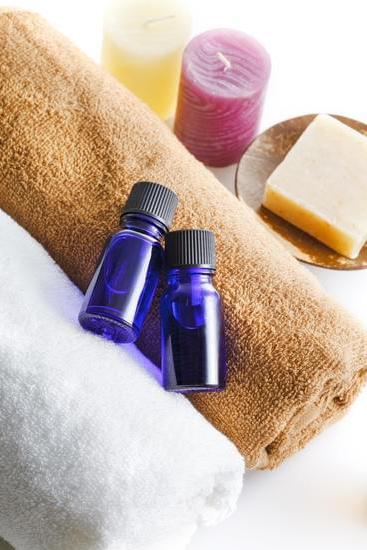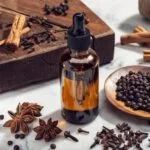Are you looking to learn how to massage oil aromatherapy? Aromatherapy has been used for centuries as a natural healing practice, and when combined with the art of massage, it can provide a multitude of physical and emotional benefits. In this article, we will explore the benefits and uses of massage oil aromatherapy, as well as provide practical tips on how to select the right oils, blend them effectively, and apply them for maximum effectiveness.
Aromatherapy is a holistic healing treatment that uses natural plant extracts to promote health and well-being. When these essential oils are combined with massage, they can enhance relaxation, reduce stress, alleviate pain, and uplift mood. Whether you are looking to improve your mental or physical health or simply want to create a tranquil atmosphere at home, incorporating aromatherapy into your massage routine can be incredibly beneficial.
Before you begin your journey into massage oil aromatherapy, it’s important to understand the different types of oils available and their therapeutic properties. Additionally, creating a custom blend tailored to your specific needs can greatly enhance the effectiveness of your aromatherapy massage experience. We will provide practical tips on selecting carrier oils and essential oils and guide you through the blending process in order to maximize the benefits of your massage oil aromatherapy practice.
Selecting the Right Massage Oil
When it comes to selecting the right massage oil for aromatherapy, it’s important to consider the carrier oils that will be used as the base for the essential oils. Carrier oils are used to dilute essential oils before they are applied to the skin during aromatherapy massage. Here are some tips on how to choose the best carrier oils for aromatherapy:
1. Consider skin type: Different carrier oils have different properties and can be beneficial for different skin types. For example, jojoba oil is great for all skin types, while sweet almond oil is ideal for dry or sensitive skin.
2. Texture and absorbency: Some carrier oils have a lighter texture and absorb quickly into the skin, while others are heavier and provide more lubrication during massage. Grapeseed oil and fractionated coconut oil are examples of lightweight carrier oils, while avocado oil and olive oil are considered heavier options.
3. Aroma: While carrier oils themselves don’t have a strong scent, they can still contribute to the overall aroma of the massage oil blend. Consider whether you want a neutral-scented carrier oil or one with its own subtle fragrance.
In addition to these tips, it’s also important to ensure that the carrier oil used is of good quality and not rancid. By considering these factors, you can select the right carrier oils for your aromatherapy massage that will complement the therapeutic properties of the essential oils being used.
Essential Oils and Their Therapeutic Properties
When it comes to aromatherapy massage, the selection of essential oils is a critical component in achieving the desired therapeutic effects. Each essential oil has its own unique properties and benefits, which can be used to address a variety of physical and emotional concerns. Understanding the therapeutic properties of essential oils is essential for creating effective and customized aromatherapy massage blends.
Understanding Therapeutic Properties
Essential oils are derived from plants and contain various compounds that contribute to their specific therapeutic properties. For example, lavender oil is known for its calming and relaxing effects, making it an ideal choice for reducing stress and anxiety during a massage. In contrast, peppermint oil has invigorating and refreshing properties, which can be beneficial for increasing energy levels and relieving tension.
Choosing the Right Essential Oils
When selecting essential oils for aromatherapy massage, it’s important to consider the desired outcome as well as any specific issues or conditions that need to be addressed. For example, if the goal is to alleviate muscle pain and inflammation, then oils such as eucalyptus or ginger may be suitable due to their analgesic and anti-inflammatory properties. Additionally, considering the client’s preferences or sensitivities is also crucial in choosing the right essential oils for the massage blend.
Customizing Massage Oil Blends
One of the advantages of using essential oils for aromatherapy massage is the ability to create personalized blends based on individual needs. By combining different essential oils with complementary therapeutic properties, it’s possible to tailor the massage oil blend to target specific physical or emotional concerns. Whether it’s promoting relaxation, easing muscular tension, or uplifting mood, customizing massage oil blends allows for a truly personalized aromatherapy experience.
By understanding the therapeutic properties of essential oils and how they can be used in combination with carrier oils for aromatherapy massage, one can create effective blends that cater to individual needs while offering a holistic approach to health and well-being.
The Art of Blending
When it comes to creating your own custom aromatherapy massage oil blend, the possibilities are endless. By combining carrier oils with essential oils, you can tailor a blend to suit your specific needs and preferences. Here are some tips to help you get started:
1. Understand the properties of carrier oils: Different carrier oils have different properties and benefits for the skin. Some popular carrier oils include sweet almond oil, jojoba oil, coconut oil, and grapeseed oil. Consider the skin type and potential allergic reactions when choosing a carrier oil for your blend.
2. Choose complementary essential oils: Essential oils have their own therapeutic properties and fragrance profiles. When creating a custom blend, it’s important to choose essential oils that complement each other both in terms of scent and therapeutic effects. For example, you may want to combine lavender for relaxation with peppermint for a refreshing aroma.
3. Experiment with proportions: Finding the right balance of carrier oils and essential oils is key to creating a well-rounded aromatherapy massage oil blend. Start by adding just a few drops of essential oil to a larger quantity of carrier oil, then adjust the proportions until you achieve the desired aroma and therapeutic benefits.
By following these tips, you can create your own unique aromatherapy massage oil blend that caters to your individual needs and preferences.
Remember, safety is always a priority when working with essential oils. Always dilute them properly in carrier oils before applying to the skin and perform a patch test beforehand if you have sensitive skin or any allergies.
Preparing for the Massage
Creating a relaxing atmosphere is essential when incorporating aromatherapy massage into your wellness routine. Setting the mood for a massage not only enhances the overall experience but also maximizes the therapeutic benefits of the essential oils used. Here are some key aspects to consider when preparing for an aromatherapy massage:
Setting the Scene
To create a soothing ambiance, consider dimming the lights or using candles to create soft lighting. Playing calming music or nature sounds can also help set the mood for relaxation. Additionally, ensuring that the room is at a comfortable temperature will allow for a more enjoyable and effective massage experience.
Choosing Aromas Wisely
When selecting essential oils for your aromatherapy massage, it’s important to consider their aromatic properties and therapeutic benefits. Lavender, chamomile, and ylang-ylang are known for their calming and stress-relieving properties, making them ideal choices for promoting relaxation during a massage. On the other hand, uplifting scents such as peppermint or citrus oils can be invigorating and energizing if you prefer a more revitalizing experience.
Creating Comfort
It’s crucial to ensure that the massage area is comfortable for both the masseuse and the recipient. Soft towels or blankets should be readily available to keep the body warm and comfortable during the massage. Additionally, using a comfortable massage table or padded surface will enhance relaxation and allow for better access to muscles for an effective massage.
By paying attention to these details, you can create an inviting space that promotes relaxation and enhances the therapeutic benefits of aromatherapy massage oil. This will ultimately contribute to a more fulfilling experience for both the giver and receiver of the massage.
The Technique
Aromatherapy massage oil is a wonderful way to promote relaxation, reduce stress, and enhance overall well-being. But knowing how to apply aromatherapy massage oil properly is key to reaping its maximum benefits. In this section, we will provide a step-by-step guide on how to apply aromatherapy massage oil for maximum effectiveness.
First, start by selecting the right carrier oil for your aromatherapy massage. The most commonly used carrier oils include sweet almond, coconut, jojoba, and grapeseed oil. These oils are easily absorbed by the skin and can help dilute the essential oils for safe application.
Next, choose the essential oils that best suit your needs. Different essential oils offer various therapeutic properties such as calming, uplifting, or pain-relieving effects. For example, lavender oil is known for its relaxing properties, while peppermint oil can help alleviate muscle tension.
Once you have selected your carrier and essential oils, it’s time to blend them together. Be sure to follow recommended guidelines for dilution ratios to ensure safe usage. Typically, a 2% dilution (12 drops of essential oil per ounce of carrier oil) is suitable for general body massage.
After blending your oils, it’s important to create a relaxing atmosphere before the massage begins. Dim the lights, play soothing music if desired, and set up a comfortable area for the massage. This will help set the mood and enhance the overall experience.
Lastly, when applying the aromatherapy massage oil during the actual massage session, be sure to warm it between your hands before gently massaging it into the skin using long, smooth strokes. Pay attention to any areas of tension or discomfort and adjust your pressure accordingly.
| Massage Oil | Use |
|---|---|
| Sweet Almond Oil | Easily absorbed by the skin and suitable for all skin types. |
| Lavender Oil | Known for its calming and relaxing properties. |
| Peppermint Oil | Can help alleviate muscle tension and soothe headaches. |
The Benefits
Aromatherapy massage offers a wide range of physical and emotional benefits, making it a popular holistic treatment. The combination of essential oils and massage has been found to promote relaxation, reduce stress, relieve muscle tension, and improve overall well-being. In this section, we will explore the numerous benefits of aromatherapy massage and how it can positively impact both the body and mind.
One of the key benefits of aromatherapy massage is its ability to promote relaxation and reduce stress. The gentle strokes of the massage combined with the soothing scents of essential oils create a calming effect on the nervous system, helping to alleviate feelings of anxiety and tension. Additionally, certain essential oils such as lavender, chamomile, and ylang-ylang are known for their relaxing properties, further enhancing the overall experience.
In addition to its emotional benefits, aromatherapy massage also provides physical relief. The use of specific essential oils can help to ease muscle tension, reduce inflammation, and enhance circulation. For example, peppermint oil is commonly used to alleviate muscle pain and headaches, while eucalyptus oil is effective in relieving respiratory issues. When paired with the therapeutic touch of massage, these oils can help improve physical discomfort and promote a sense of well-being.
Lastly, aromatherapy massage has been shown to have positive effects on mood and mental health. The release of certain endorphins during the massage process can elevate mood and contribute to an overall sense of happiness and contentment. Furthermore, by targeting specific emotional concerns such as depression or fatigue with carefully selected essential oils, aromatherapy massage can provide much-needed emotional support.
| Benefit | Description |
|---|---|
| Promote Relaxation | The gentle strokes combined with soothing scents create a calming effect on the nervous system |
| Physical Relief | Specific essential oils ease muscle tension, reduce inflammation, and enhance circulation |
| Mood Enhancement | The release of endorphins during the process elevates mood and contributes to an overall sense of happiness |
Safety Precautions
In conclusion, incorporating aromatherapy into massage oil can enhance the overall experience and provide both physical and emotional benefits. By understanding the therapeutic properties of essential oils and selecting the right carrier oils, one can create a custom blend that caters to their specific needs. The art of blending is a creative process that allows for personalization and experimentation, while creating a relaxing atmosphere and setting the mood is essential for maximizing the effectiveness of aromatherapy massage.
When applying aromatherapy massage oil, it’s important to follow a step-by-step guide in order to ensure that the techniques used optimize the benefits. From relieving muscle tension to promoting relaxation and emotional well-being, aromatherapy massage offers a variety of advantages. However, it’s crucial to be aware of safety precautions and contraindications when using aromatherapy massage oils in order to prevent adverse reactions or sensitivities.
Frequently Asked Questions
What Is the Best Way to Use Aromatherapy Oils?
The best way to use aromatherapy oils is through diffusion or inhalation. You can use a diffuser to disperse the oil into the air, or simply inhale the scent directly from the bottle or a few drops on a tissue.
How Do You Use Essential Massage Oils?
Essential massage oils can be used by diluting them with a carrier oil, such as coconut or almond oil, and then applying the mixture to the skin during a massage. The oils can also be added to bathwater for a relaxing soak.
How Do You Use Aromatherapy Body Oils?
Aromatherapy body oils can be used by applying them directly to the skin after a shower or bath. You can also add a few drops of the body oil to your bathwater for a luxurious and relaxing experience. Additionally, some people like to use body oils for self-massage after showering.

Are you looking for a natural way to improve your health and wellbeing?
If so, aromatherapy may be the answer for you.





